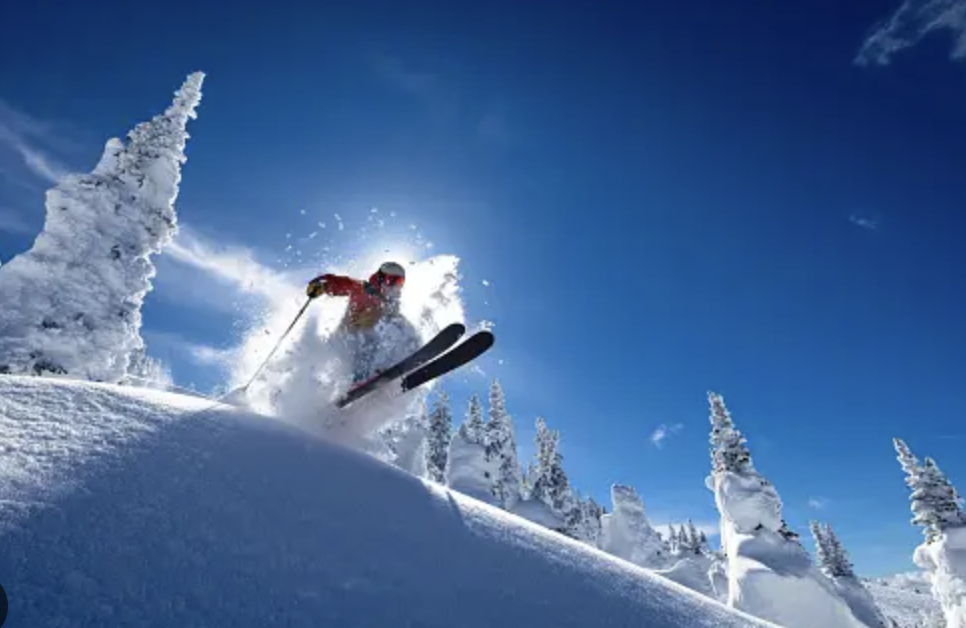The Problem with Vail Resorts

Vail Resorts, a leading global mountain resort operator with locations from the Rockies to Switzerland, offers world-class skiing and luxurious amenities, making it a premier destination for winter sports enthusiasts. One of its most significant advantages is the Epic Pass, a season-long pass that grants access to all 41 Vail Resorts locations and additional partner resorts worldwide. This pass not only provides cost savings for frequent skiers and snowboarders but also offers unmatched flexibility and variety, allowing adventurers to explore a diverse range of terrains and experiences.
So What's the Problem?
Vail Resorts has drawn criticism from skiers worldwide on multiple fronts. First and foremost, skiers complain about the corporate environment and overcrowding the skiing giant brings to local ski mountains. The complaints have come from both mega-resorts such as Beaver Creek, Park City, and Breckenridge, and small resorts such as Stowe and Wilmot. Some of the effects of Vail Resorts on ski areas and the ski community are as follows:
-The acquisition of so many resorts across the US moves the ski business closer and closer to a monopoly, which would reduce competition, increase prices as monopolies are "price makers" as opposed to "price takers" in perfect competition
-The massive influx of people to Vail-owned ski towns has had a detrimental effect on local businesses. Restaurants have waitlists up to 500 people long, rental places are running out of skis, and traffic to get to mountains which would normally take minutes now takes hours, not to mention the unbelievably long lift lines
-Although Vail Resorts claims to be striving for "Net Zero" environmental impact by 2030, they do not seem to be striving for social sustainability and creating skiers who will love the sport for a lifetime, damaging skier morale and culture
-The corporate atmosphere takes away from the individual character of resorts. For example, Kirkwood, in California, used to offer free ski days for locals, but since the resort was acquired by Vail, those have yet to be seen
In recent years, Vail Resort's unethical way of running resorts has turned skiers away from their locations. Experienced, hardened skiers are turning to mountains owned by smaller companies or owned independently, and some are opting to go backcountry. A skier from an Ohio Resort has even claimed that “Skiers are a hardy, loyal bunch, but Vail may turn us off the sport for good,” in an email to SKI Magazine.
Vail Resorts's Efficiency and Employee Rights Troubles
The second major effect Vail Resorts is having on the ski community is in regard to short staffing and inefficiently run resorts, having an effect on both skiers and employees. Crested Butte Resort in Colorado, a 2018 acquisition, is a great example of the lack of efficiency with which Vail Resorts operates and the effect on its employees. Patrons at the resort complain of everything from long lift lines to unplowed parking lots, limited terrain, and frustrated, overworked employees.
Denis Hall, a long-time season pass holder at Crested Butte claims that through the 4 different ownerships he has seen at Crested Butte, Vail is the only one that destroyed the culture and made the skiing worse. Hall is not an anomaly in his public opposition of the corporate giant: an anti-Vail Resorts online petition about the management of the Stevens Pass ski area in Washington State has garnered more than 400 supporters after they only opened 40% of trails over the holiday season. Vail is also seeing an increase in faulty equipment, with several instances of chairlifts malfunctioning and causing injury, highlighting their ignorant practices.
A significant part of the lack of efficiency and trail closures is the short-staffing Vail Resorts is experiencing, however, they seem to have brought this upon themselves: Earlier this season, ski patrol at Vail-run slopes in Park City, Utah nearly went on strike — citing too-low pay as the dominant factor. Vail has offered a $13.1 million settlement in California for lawsuits claiming that the company violated federal labor laws and not compensating staff for training time and equipment. Denis Hall, the same Crested Butte veteran says “The first two things they need to do is pay their people and house their people". A great company stems from happy employees and happy customers, and right now, Vail seems to have neither.
The Bottom Line
There is no one who can benefit more from a turnaround than Vail themselves. Vail Resorts stock is down 6.26% over the past year, and the backlash they are experiencing is almost overwhelming. This seems like a classic story of corporate greed that has unfortunately reached the ski slopes, and as an epic pass owner, I would love to see Vail return to the top ski company that it used to be. Vail needs to set their sights on the future. Demand for skiing can be very elastic as it is a luxury for most people, so by investing in sustainability and a superb ski experience, Vail can hope to rebound. The skiers and employees have demanded a change in operations, and now it is up to Vail to respond.
References
Hansman, H. (2022, February 25). What Vail needs to fix if it wants to retain skiers-and their respect. Ski Mag. https://www.skimag.com/culture/what-vail-needs-to-fix-for-skiers/
Meyer, J. (2022, January 28). Backlash against Vail resorts growing among skiers and snowboarders across the country. The Denver Post. https://www.denverpost.com/2022/01/28/vail-resorts-complaints-epic-pass-staffing-colorado/
Wikimedia Foundation. (2023, October 17). Vail Resorts. Wikipedia. https://en.wikipedia.org/wiki/Vail_Resorts#:~:text=Vail%20Resorts%20operates%2041%20ski,on%20the%20California%2DNevada%20border.